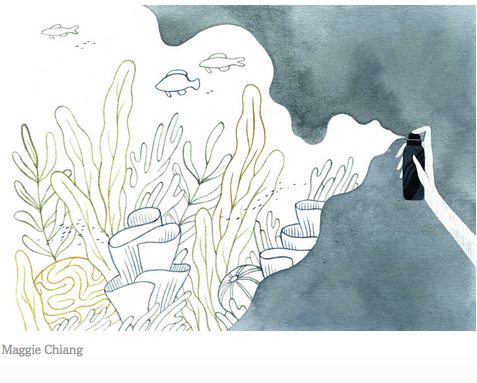At first I thought it was my imagination, but this summer there was no denying it: I felt, abruptly, like I was snorkeling through an underwater desert. Most of the coral had turned white, a sign that it was in danger of dying. Entire species of fish had vanished, and those that remained — like Hawaii’s tongue-twisting state fish, the humuhumunukunukuapua’a — were sparse, barely a classroom’s worth, let alone a school.
According to the Hawaii Department of Land and Natural Resources, the fish population of what I have come to consider my reef had, depending on the areas surveyed, declined between 43 and 69 percent between the late 1970s and 2008. The state created a long-term “coral bleaching recovery plan” to prevent further damage and promote regrowth after specific events, like the spreading mass of warm water in the Pacific Ocean in 2014 that came to be known as “the Blob,” or the high ocean temperatures that killed 50 percent of coral on some reefs off Big Island in 2015. But there is something in addition to climate change that may be damaging reefs, something more immediately and individually controllable: sunscreen.




